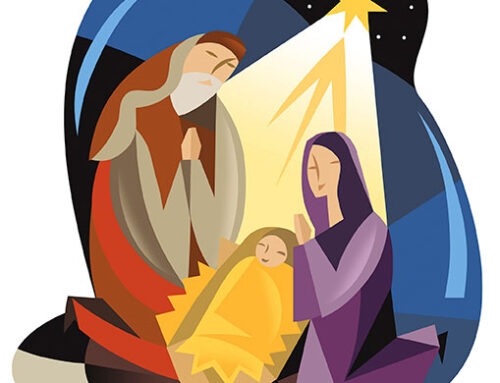
We say there are two certainties in life: death and taxes. Let me add a third: change. We often struggle with change. I have experienced a lot of changes in my life—some I have chosen, while others have been imposed upon me.
Making Sense of Life’s Changes is the subtitle of William Bridges’ book, Transitions. Bridges was an English professor who underwent a career change. During the process he led a support group of other people who were also in major life transitions. From their experiences and other research, Bridges concluded that every significant change has three essential stages: Endings, the Neutral Zone and the New Beginning.
William Bridges has helped me to frame and better understand what you and I go through. I would like to share with you what I have learned, since we all experience change.
Change can be exciting when you embrace endings.
 Endings are the beginnings of change. Often this requires a grief process that takes us through the steps from denial, to resistance, to acceptance. Perhaps the most painful part of ending is the sense of finality. We have become so comfortable with the old way that it is almost impossible to imagine a new way.
Endings are the beginnings of change. Often this requires a grief process that takes us through the steps from denial, to resistance, to acceptance. Perhaps the most painful part of ending is the sense of finality. We have become so comfortable with the old way that it is almost impossible to imagine a new way.
Sometimes it can be difficult to cope with the ending of bad things. The Lord brought the Israelites out of Egypt with great signs and wonders. They celebrated with shouting, singing and dancing as Pharaoh and the Egyptian army drowned in the Red Sea. The celebration soon fizzled and six weeks into their journey their complaints spread like a virus through the camp (see Exodus 16:1-3, Numbers 11:1-6 and Numbers 14:1-4).
A life of slavery back in Egypt looked pretty good—in memories that became rosy over time. Several times the Israelites grumbled, complained and yearned to return to Egypt. We certainly have a way of romanticizing the “good old days”.
Change can be exciting when you embrace the neutral zone.
 The Neutral Zone is a period of reorientation—an “in-between time” that is often unstable and uncertain. Like a trapeze artist waiting for his fellow performer to catch him in midair, we have neither the comfortable familiarity of the old nor the fresh assurance of the new. When someone loses a job, good health or a spouse, he or she feels disconnected.
The Neutral Zone is a period of reorientation—an “in-between time” that is often unstable and uncertain. Like a trapeze artist waiting for his fellow performer to catch him in midair, we have neither the comfortable familiarity of the old nor the fresh assurance of the new. When someone loses a job, good health or a spouse, he or she feels disconnected.
This neutral zone is particularly important in organizations. The founder has retired or died. The great days are all yesterday. The new leader just doesn’t measure up yet. Everyone begins to wonder if there is any future at all. It can be painful and tense; however, the neutral zone can be an opportunity to explore new ideas and directions. What is the “new normal”? What will be the “new normal”?
The Lord understood the challenges of the neutral zone. He made some adjustments for it in Exodus 13:14-18. During this “neutral zone,” God tried to make their trip less overwhelming by bridging the past to the future. Unfortunately, the Israelites took 40 years and a whole generation had to die off before they could enter the Promised Land. It was one thing for the Lord to get His people out of Egypt; it was quite another to get Egypt out of His people. A journey that could have taken just 40 days took 40 years because they would not put the past behind them and trust the Lord to lead them into the future.
Simon Sinek highlights five groups of people that respond to change: innovators, early adopters, early majority, late majority and laggers (who will only make the change when they are forced to do so). (Source: https://catchthefire.com/blog-full/succeed-in-change).
Much of the world is in the neutral zone right now with widespread uncertainty. Some respond with fear while others respond with faith. Some drown in despair while others focus on discipline. Some are filled with anger while others pour out affection. Some lose heart while others spread hope.
Change can be exciting when you embrace new beginnings.
 The New Beginning is when hope is rekindled and new chapters are written. There is either a renewal of original purpose or the establishment of new purpose. Fresh starts do not negate the past—they simply accept the reality and the opportunity that comes with change.
The New Beginning is when hope is rekindled and new chapters are written. There is either a renewal of original purpose or the establishment of new purpose. Fresh starts do not negate the past—they simply accept the reality and the opportunity that comes with change.
In churches, the new beginning devotes today’s energy to meet today’s challenges; and it reaches out to today’s generation. It means building on the past, but not trying to relive the past. It is the signal that change is complete.
New beginnings had come to the nation of Israel (Joshua 1:1-11) after Moses had died and God called Joshua to lead Israel. The Lord parted the Jordan River and declared in Joshua 5:9, “Today I have rolled away the reproach [disgrace or shame] of Egypt from you.”
The Israelites were finally ready to put their life of slavery in Egypt behind them and begin to move boldly into their future! Like the caterpillar who becomes a beautiful butterfly, our capacity to receive what the Lord has for us in the future is directly proportionate to our willingness to let go of the past. It is a matter of trust. Will we trust the Lord to lead us through change?
God can use transitions to accomplish His will in your life.


Allan Pole
CESLM President
al@eslcooperative.ca






























































Wow!!!